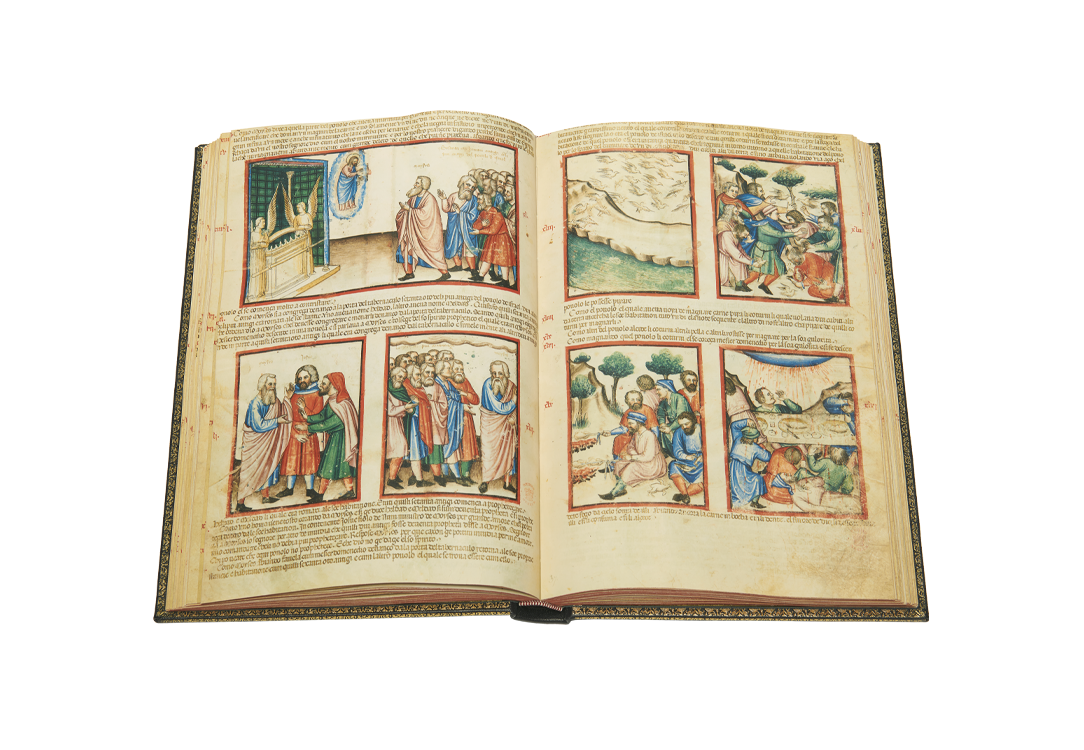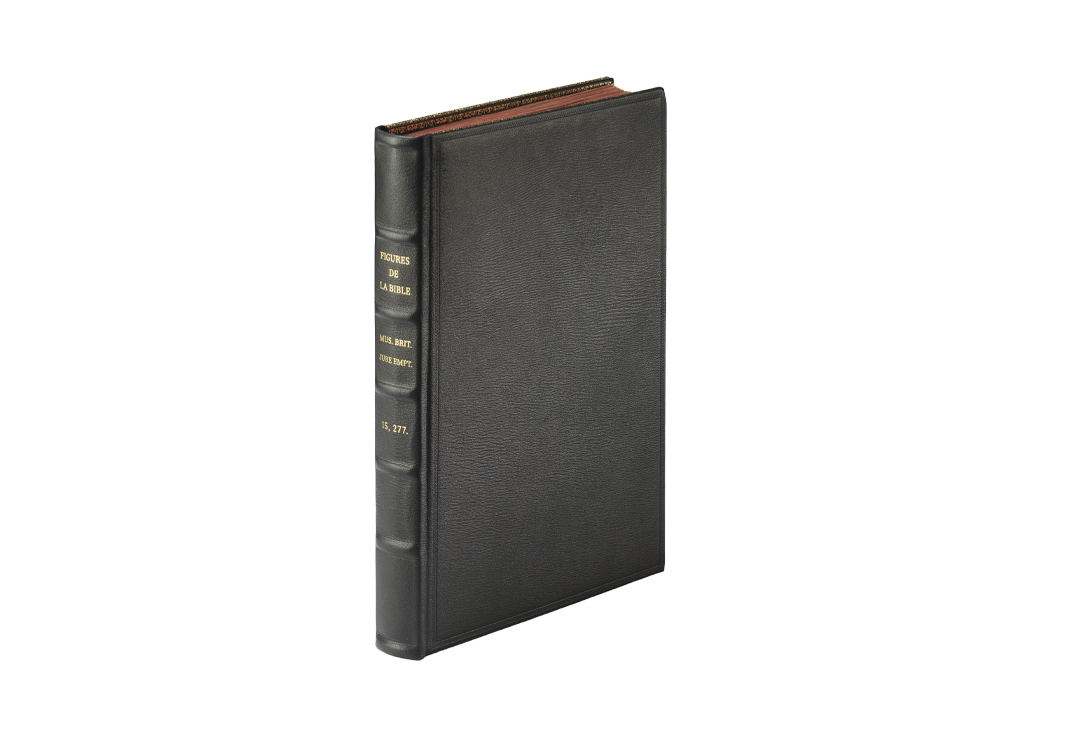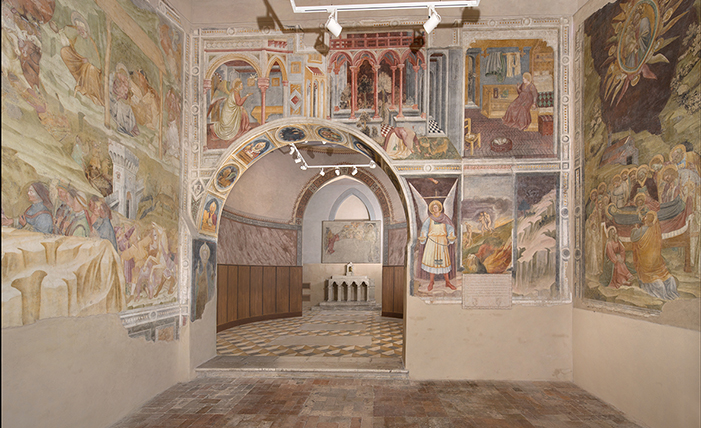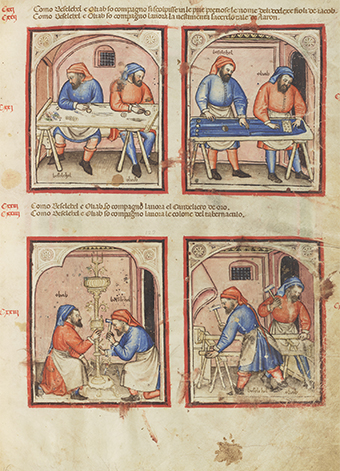
The Paduan Bible Picture Book
The most fascinating Bible at the threshold from Late Gothic to Early Renaissance
The Paduan Bible Picture Book transports us to one of Italy’s oldest cities. In that city famous for its culture, a busy scriptorium was active in the late fourteenth century. Already at that time, manuscript illuminators and scribes would have hurried through the very arcades of present-day Padua’s old town on their way to work. The Paduan Bible Picture Book was produced in a fascinating period on the threshold from the Late Gothic to the Early Renaissance. The ‘Maestri della Bibbia istoriata Padovana’ (Masters of the Paduan Bible Picture Book) operated a studio that was esteemed by a powerful noble family. Did Francesco Novello da Carrara, Lord of Padua, commission this Bible?
Faksimile-Edition
The Paduan Bible Picture Book: The Manuscript
A magnificent Bible picture book
The painting style in the Biblical codex from Padua resembles that of Jacopo da Verona, who painted the wonderful frescoes on the life of the Virgin Mary in the Oratory of Saint Michael (a prayer room in the Gothic style). Several art historians see Jacopo as the illuminator of the Paduan Bible Picture Book. In addition to the Lord of Padua, the Church and numerous members of the wealthy educated class and the nobility are possible candidates for the patron of the Bible Picture Book. The illustration shows frescoes from 1397 by Jacopo da Verona in the Oratorium di San Michele in Padua, which presumably served as models for the Bible Picture Book. Click it to compare the frescoes to a page of miniatures (fol. 54r) from the Paduan Bible!
Whether fresco or miniature: More realism in the reproduction
Shortly before 1400, manuscript illuminators in Padua created this monumental Bible picture book, most probably for Francesco Novello of the influential da Carrara ruling family. A fresh wind blows through these miniatures, whose realism was influenced by the innovations in painting that Giotto had initiated only a few decades earlier with his frescoes in Padua. Dante, Petrarch, and Boccaccio wrote their immortal poems not in Latin but in the language of the people. These two factors come together in the Paduan Bible Picture Book: its 529 illustrations on 172 pages express a new awareness of a stronger sense of reality.
The art of the book from one of Italy’s oldest cities
The Bible paraphrases describing the images appearing above and below the miniatures are written in an Italian tinged by the Paduan dialect. Text and image fuse in a unique way the past of the Biblical story and the present-day of the patron from Padua around 1400. When walking through Padua, one can discover not only the much-praised frescoes of the Oratory of Saint Michael but also the Basilica di Sant’Antonio, which is famous as a destination for pilgrimages. Our eyes fall on the fourteenth-century murals by Giotto, Giusto de’ Menabuoi, Altichiero da Zevio, Jacopo Avanzi, and Jacopo da Verona – all part of this World Cultural Heritage Site.

Bilderbibel aus Paduar
Under the Magnifying Glass: Images as if in a Film
Fol. 16r illustrates the work of two talented craftsmen named Bezalel and Oholiab. Moses gave Bezalel the task of designing the tabernacle – the tabernaculum testimonii (‘tent of the testimony’) – according to God’s instructions. The Tablets of the Ten Commandments were preserved there in the Holy of Holies. Moses speaks to the Israelites: ‘Behold the Lord has called by name Bezalel … he has filled him with the spirit of God, with wisdom and understanding and knowledge and all learning, to devise and to work in gold and silver and brass, and in cutting stones, and in carving wood, in every kind of craft.” (Exod. 35:30–33).
No priests or prophets are depicted here, just talented men who could also teach others. They are skilled in the planning and execution of many different crafts: ‘God has filled them [Bezalel and Oholiab] with skill to do every kind of work done by an artisan or a designer or by an embroiderer in blue, purple, and crimson yarns, and in fine linen, or by a weaver – by any sort of artisan or skilled designer.’ (Exod. 35:35). The finished ‘tabernacle of God with men’ (Rev. 21:3) touched people’s hearts
Bilderbibel aus Padua
The Paduan Bible Picture Book: The Edition

The Manuscript and the Facsimile at a Glance
Manuscript: British Library, London, Add. MS 15277
Date of Origin: shortly before 1400
Place of Origin: Italy, Padua
Format: 32.5 x 23 cm
Extent: 172 pages (86 folios)
Artist: Jacopo da Verona?
Patron: Francesco Novello da Carrara?
Illumination: 529 images – an intoxicating cycle of miniatures illustrating the Old Testament from Exodus 1:11 to the end of the Book of Joshua, with brief legends in old Italian. The descriptions are brief because the pictorial narrative speaks for itself! The miniatures are basically describing the Biblical events, but they are permeated with secular content.
Binding: Black leather binding with elegant gold embossing on the endpapers, hand-sewn headband, facsimile and commentary volume in handmade linen slipcase.
Commentary Volume for the Facsimile Edition: Dr. Karl-Georg Pfändtner (Director of the Staats- und Stadtbibliothek Augsburg) and Dr. Ulrike Bauer-Eberhardt (formerly of the Bayerische Staatsbibliothek, Munich). German translation of the text in old Italian: Dr. Marina Molin Pradel (Bayerische Staatsbibliothek) in collaboration with Prof. Dr. Norbert Kössinger (Otto-von-Guericke-Universität Magdeburg).
Print run : 680 copies
Faksimile-Edition
Enjoy Viewing 10 Sample Pages :
A Glance at the Paduan Bible Picture Book
The excerpt from the Paduan Bible Picture Book selected for leafing through include fols. 12r–16v. From the story of Moses, you see him receiving the Tablets of the Law, the motif of the relapse into idolatry, the revolt against Moses’ authority, and much more.
The Biblical paraphrases that describe the images, above and below the miniatures, are written not in Latin but in an Italian coloured by the Paduan dialect. Text and image fuse in a unique way the past of the Biblical story and the present-day of the patron from Padua in around 1400.
Faksimile-Edition
A Challenging Production: fac simile
The Old Testament Comes Alive
The plagues of Egypt, the exodus of the Israelites, Moses and the Ten Commandments, the worshipping Golden Calf, the trumpets of Jericho – many famous stories from the Old Testament come alive. Nearly all of the large-format pages are filled by four framed miniatures; there are also four full-page miniatures. The detailed narrative of the sequences of scenes makes it possible to follow the stories of the Old Testament very well.
Revelling in images
All 172 pages of the Paduan Bible Picture Book are reproduced faithfully with their miniatures. Page after page, the images in freshly radiant colours tell the stories of the Old Testament. The pioneering innovations in mural painting introduced by northern Italian artists, including Giotto above all, are evident. Architectural elements, landscape details, and groups of figures are often conceived as unities in these miniatures, drawing us into the depths of the pictorial field.
Brilliant colours and minium
Faithfully to the original, the facsimile has been bound in black leather, and the endpapers of the front and back covers are decorated with elegant gold embossing. The roughness of the paper and its slight waviness convey the sense of holding parchment. Minium – a bright orangish shade – under the paints adds a striking colour accent to the Bible Picture Book that represented a challenge when making the facsimile (see the hearth, fol. 34r). It required all the lithographer’s knowledge to achieve the brilliance of the original in this shade.
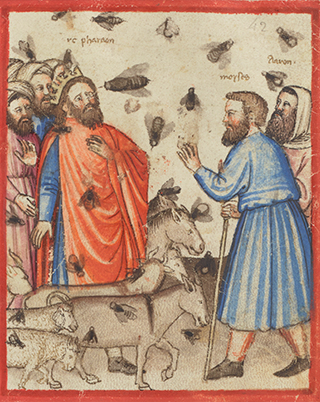
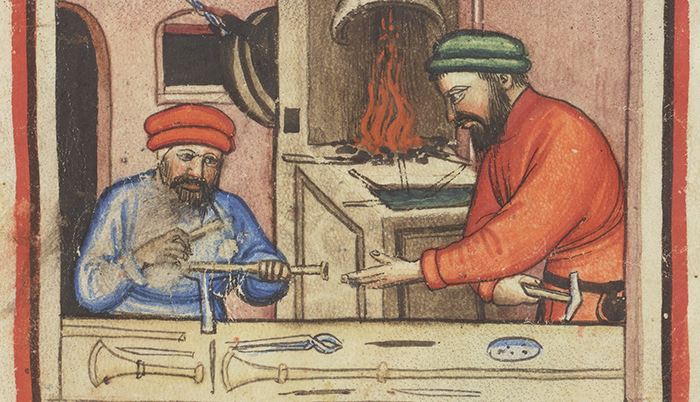
Faksimile-Edition
The Facsimile Folder for the Edition
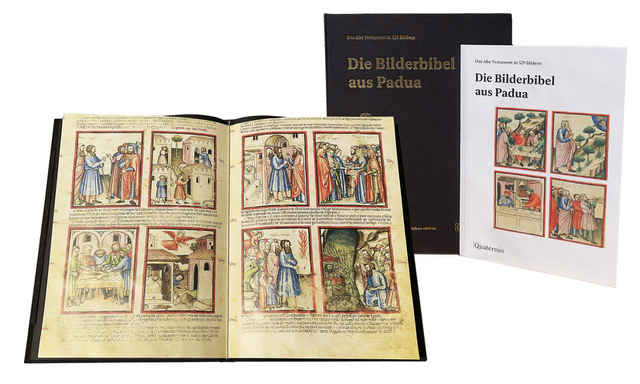
A thirty-six-page accompanying brochure with an essay by Dr. Ulrike Bauer-Eberhardt awaits you. The facsimile folder is an introduction to the colourful visual world of the Bible from the perspective of Trecento painters. Test your knowledge of the Bible stories – each folio with its numerous miniatures is explained in word and image. The Paduan Bible Picture Book offers pure visual pleasure. Its miniatures open up a picture gallery that astonishes the eye.
Bilderbibel aus Padua




